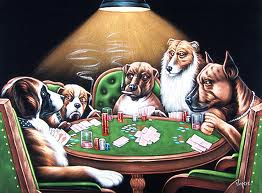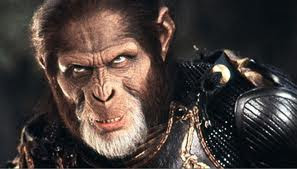This might seem a little disturbing for an outsider looking in, particularly when our over-sentimentality and irrational attachment is balanced against our farming and butchering methods and our environmental maintenance methods, which frequently include the culling of those animals we profess to love so much. Oh, and don't bother thinking cats and dogs have escaped our less loveable actions because we've been killing them for as long as they've been around us or threatened us, sometimes for completely irrational reasons that are based on fear.
So for those of you who are a little unsure just what anthropomorphism entails here is a short definition: "Anthropomorphism is any attribution
of human characteristics (or characteristics assumed to belong only
to humans) to other animals, non-living things, phenomena, material
states, objects or abstract concepts, such as organisations, governments, spirits or deities." - Wikipedia.
In short, for animals it means this:
Snoopy
Teenage Mutant Ninja Turtles
Dogs playing poker? A dog typing on a keyboard? Turtles fighting as ninjas? Why not?
Aesop's Fables (written in 6th century BC Greece ) is a quick and easy example of literary anthropomorphism rather than in art, comics or cartoons. Another one many of us grew up with was the cat in the hat. Anthropomorphism also features in most religions and mythologies humanity has ever believed in, sometimes as a way of illustrating that we should get along with nature and sometimes as a warning of nature's fickleness. As a literary device anthropomorphism has ancient roots and will likely always be a device used to illustrate our relationship with nature.
Cat In The Hat
On an interesting side note: There are religious doctrines that take a position expressly against animals, plants, the earth and the weather having any characteristics in common with humanity, particularly with regards to souls or intelligence. To be honest, I find these opinions damaging and blinkered so you won't find me expounding on them in any positive manner.
Now, in literature, comics, cartoons and art you can technically assign any particular human characteristic to any particular animal, plant, mineral or weather system you so please. Generally we have assigned human motivations, the ability to reason and converse, human reactions and human emotions. But no matter what is assigned or how much, as long as there is a combination of both natures then the character is anthropomorphic. For in essence anthropomorphic characters are a mix of humanity and the original nature of whatever you've chosen to assign human qualities to. Even if only in the form of the character remains as animal, plant, mineral or otherwise.
We are all quite familiar with very humanised animals but sometimes there is only a hint of humanity given to a character. That hint of humanity however, is nearly always recognised due to the powerful images produced. For example: The sea is a she and she rages as much as she provides peace, she's a grave and a source of life, she's endlessly powerful and immense yet she can give safe passage if she so wishes.
Scene Two: The Sailing Vessel Runs into Rough Seas by P.e. Lawrence
You could go on but the sea that is a she is still the sea and in reality is far from anything human at all. Describing the sea as a woman though, adds mood to its wild nature, adds extra purpose and provides agency. Assigning a gender denotes a will where there isn't really one. In reality the sea doesn't need a will to act and react as it does. It just is what it is. We usually perceive it as smaller separate regions or do not attempt to fully grasp its power at all but with the addition of a gender and a will the sea becomes a mighty singular force within our minds, one that could easily dominate an entire book with all the human characters reacting to the sea's will.
So if you are writing an anthropomorphic character, how much humanity should you include? How far should you take it and what characteristics of the original being should be lost in the replacement?
That depends on the role of the character in the story and whether you intend to shed light on the manner in which we treat animals, plants or the earth.
If you want to shed light on such things than a fairly even mixture might do well. There is enough humanity to be understandable and there is enough of the other to appeal to an audience to understand. Just as children once cried out of the fate of deers because of a movie called Bambi, there are now children who will likely want to do anything to save a penguin, lion or panda. There are likely even children who now love monsters for the very same reason.
The original form of the being needs to be maintained though, as this is the identifier, the aspect that will be most recognisable for years to come and the aspect that acts as a reference to which animal, plant etc. needs care and protection. So if the form remains the same for the purpose of drawing attention to a cause then so should some of the motivations of the character and the environment he/she/it lives in. A penguin wandering the city acting as a human will do little for the cause. So what changes? The emotions, the intelligence and the ability to reason and converse. Give them speech, relationships and something to fight for. Make them active and make them the focus of your plot, the ones to act rather than the ones to react or be acted upon.
Happy Feet
If you aren't creating an anthropomorphic character for the purposes of shedding light on an issue relating to nature then any degree of anthropomorphism will likely do. But as there are degrees you should play with those degrees to bring out the 'personality' you desire in your character and the amount of impact you'd like your character to have.
The more humanity is added the less haunting, distanced or unearthly a character will become. Your anthropomorphic characters can even become entirely understandable and recognisable as human if given excessive amounts of humanity. If you ascribe excessive amounts of humanity without explaining why, it will become quite ridiculous that your character isn't human at all.
There has to be a reason behind anthropomorphic characters being what they are if they are all but human. That reason can be provided through a back story on genetics and a plot revolving around evolution, or something of that nature. This might seem a bit far fetched or convoluted but a reason does need to be included so don't forget to add it in. Why? Because only when a reason for their existence is adequately applied can you look into humanity's nature as an observer - the anthropomorphic character being human in nature - which is generally why a mostly-human anthropomorphic character is used. To create this observation of humanity's nature only minimal aspects of the creature's original inner personality and nature should remain while all aspects of human emotions, motivations, intelligence, ability to converse etc. should be added.
Planet of the Apes
The less humanity added to a character the more profound an impact that character will have when he/she/it acts, particularly if you only assign a will or soul. The character becomes something that humans know they cannot control easily or understand (both control and understanding being dominant drives in humanity's own self-characterisation). When wronged the anthropomorphic character can be made into a powerful force that humanity fights against or simply seeks to survive. Or if there is to be no such thing as wrong or right, when the character acts it is for its own survival or due to its own nature, one that could have the same devastating results for humanity if humans don't learn. Even if they are presented as weaker than humanity these less anthropomorphised characters are ethereal and delicately eternal in our eyes. They provide a fleeting and tantalising glimpse into what it is to actually be something other than what we are. They can also become a figurehead for that particular being or entity.
All that said, no matter the degree of humanity added, anthropomorphic characters are powerful and lasting and if it is possible to add them to your story then add them without hesitation. It does mean you may have to step outside the bounds of reality based general fiction or literature but don't worry, you don't have to stray too far if you don't want to. A good old traditional piece on the sea and whales, the desert and water or spooky forests with clawing branches will do the trick. Still, anthropomorphic characters can really make a story as long as there is adequate justification for their existence (except in the case of entities that can be likened to gods - the sea, the wind, earth etc.) and the level of anthropomorphism fits with the rest of the story.







No comments:
Post a Comment